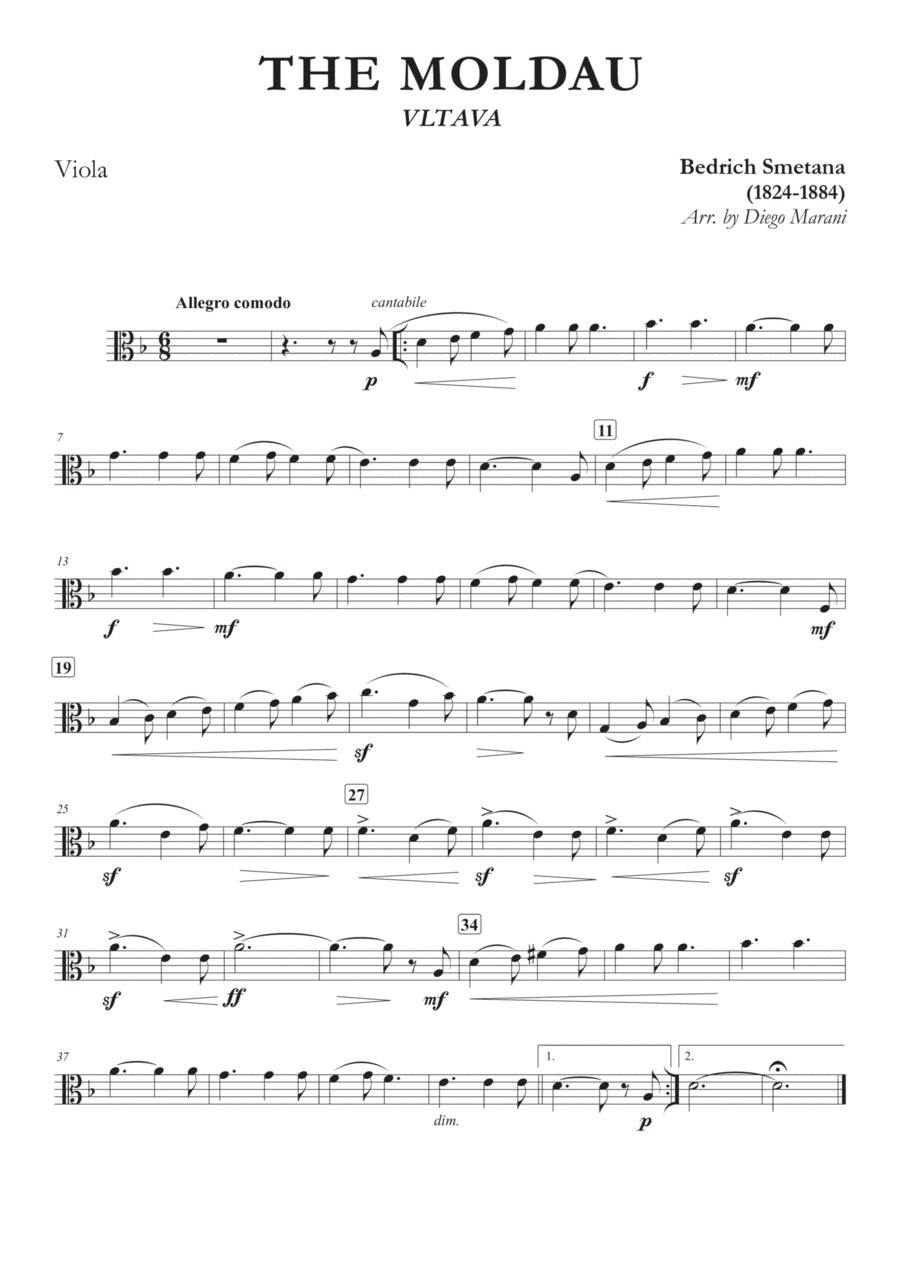Piano,Viola - Level 2 - Digital Download SKU: A0.594466 Composed by Bedrich Smetana. Arranged by Diego Marani. Classical,Instructional,Romantic Period,Standards. Score and part. 4 pages. Diego Marani #203743. Published by Diego Marani (A0.594466). The Moldau, Czech Vltava, is a symphonic poem by Bohemian composer Bedřich Smetana that evokes the flow of the Vltava River—or, in German, the Moldau—from its source in the mountains of the Bohemian Forest, through the Czechcountryside, to the city of Prague. A devoutly patriotic work, The Moldau captures in music Smetana’s love of his homeland. Completed in 1874 and first performed the following year, the piece constitutes the second movement of a six-movement suite, Má vlast (My Country), which premiered in its entirety in Prague on November 5, 1882. This easy arrangement for viola with piano accompaniment is suitable for classroom, repertoire and recital.
